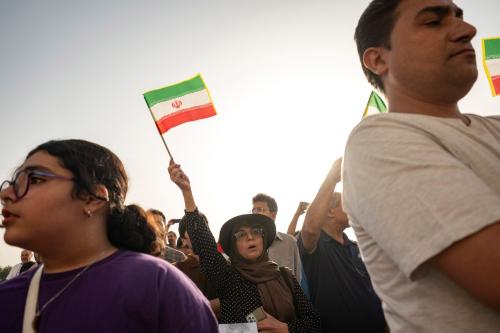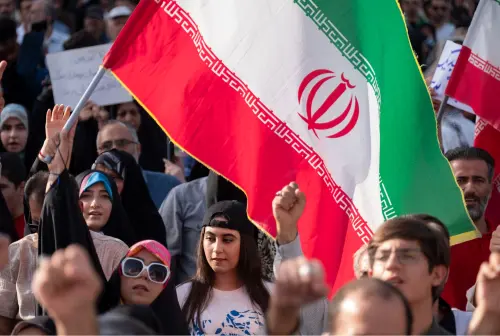A year after mass street protests culminated in the astonishing ouster of Egyptian President Hosni Mubarak, the story of Egypt has soured. The world watched in awe last February as Egyptians came together to seize control of their political destiny from a sclerotic military ruler that had eroded the country’s stature and squandered the opportunities that its disproportionately young population so desperately craved. Today, jubilation has been replaced by trepidation both in Egypt and around the world, as violence flares on the streets of Cairo and a military leadership reluctant to give up the reins of power has targeted pro-democracy activists and the international community that seeks to help them.
Nowhere does the saga of Egypt’s first post-revolutionary year resonate more than in Iran. Iranians are all too familiar with the turbulence besetting Egypt today: they have endured their own encounter with the high hopes and dashed expectations of a popular revolution gone awry. In particular, Iran’s own experience offers a cautionary tale of the dangers inherent in the first post-revolutionary year.
As Iranians know all too well, revolutions that are forged on the basis of shared resentment of a ruler can founder when it comes to establishing a coherent vision of the future. The divisions among the disparate elements of the revolutionary coalition sharpen and encourage a cutthroat contest for power. Opportunists have a way of exploiting historical moments and hijacking embryonic institutions, and moderates rarely fare well in times of chaos and uncertainty. Crises – particularly those that play upon popular mistrust of foreign powers – can provide openings for demagogues, and persistent uncertainty and instability erodes public trust in the political process. These very same factors during Iran’s first post-revolutionary year together enabled an outcome that most of the millions of peaceful protestors never intended or expected.
Egypt’s future will not closely resemble Iran’s revolutionary theocracy. The political and social conditions within the two countries diverge too substantially. Unlike Iran in 1979, both religion and ideology have taken a back seat in shaping political outcomes in Egypt, and no charismatic leadership has emerged to mobilize Egyptians in dangerous fashion. Nor is Egypt likely to face the sort of existential dilemma that confronted Iranians a mere 18 months after the Shah’s departure, an external invasion that forcibly unified the nation and empowered vicious repression against any dissent. And the differences between the international context for the emergent revolutionary states are paramount; Iran’s upheaval played into the Cold War contest for influence, particularly in the wake of the Soviet invasion of Afghanistan, whereas Egypt can benefit from broad multilateral support for its fledgling post-revolutionary state.
Still, the international community should bear the Iranian experience in mind as it seeks to pressure and persuade Egypt’s interim authorities to steer their country’s course in a responsible fashion. The transition is every bit as important as the revolution, and even more precarious. As Iranians begin the official celebration of the 33rd anniversary of their own epic uprising, their country today is largely calm, having skirted the immediate contagion of the Arab spring last year. And yet there is an almost overwhelming sense of uncertainty, with the domestic economy in crisis thanks to severe new international sanctions and profound forebodings about the prospects for a new military conflict between the revolutionary regime and the rest of the world. The initial post-revolutionary moment is ultimately a fleeting one; Egypt, like Iran, will begin to settle into patterns that may govern its domestic conditions and relations with the world for decades to come. It is critical that Egyptians, with the support of the international community, navigate this transition wisely.
The Brookings Institution is committed to quality, independence, and impact.
We are supported by a diverse array of funders. In line with our values and policies, each Brookings publication represents the sole views of its author(s).



Commentary
Op-edEgypt after Year One
February 7, 2012